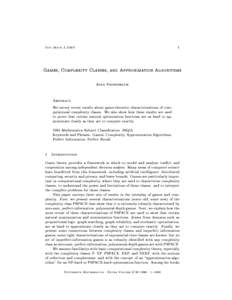<--- Back to Details
| First Page | Document Content | |
|---|---|---|
 Date: 2001-10-24 10:52:24Complexity classes PSPACE-complete IP Generalized geography PSPACE PP ArthurMerlin protocol Computational complexity theory NP P NEXPTIME Reduction |
Add to Reading List |
| First Page | Document Content | |
|---|---|---|
 Date: 2001-10-24 10:52:24Complexity classes PSPACE-complete IP Generalized geography PSPACE PP ArthurMerlin protocol Computational complexity theory NP P NEXPTIME Reduction |
Add to Reading List |